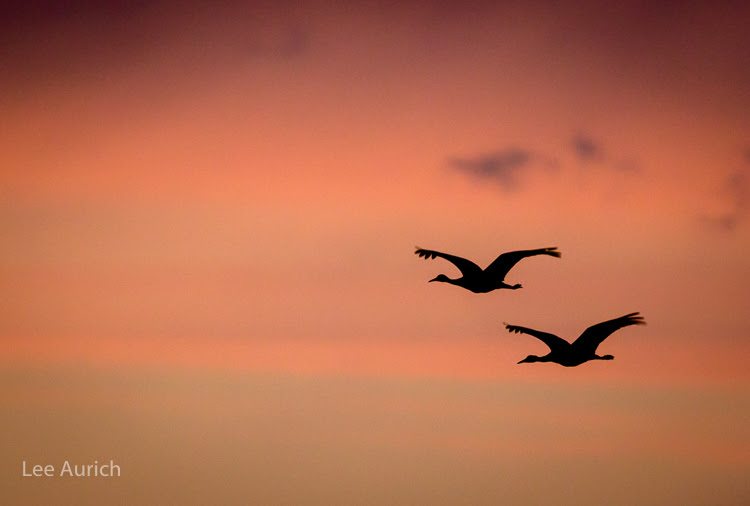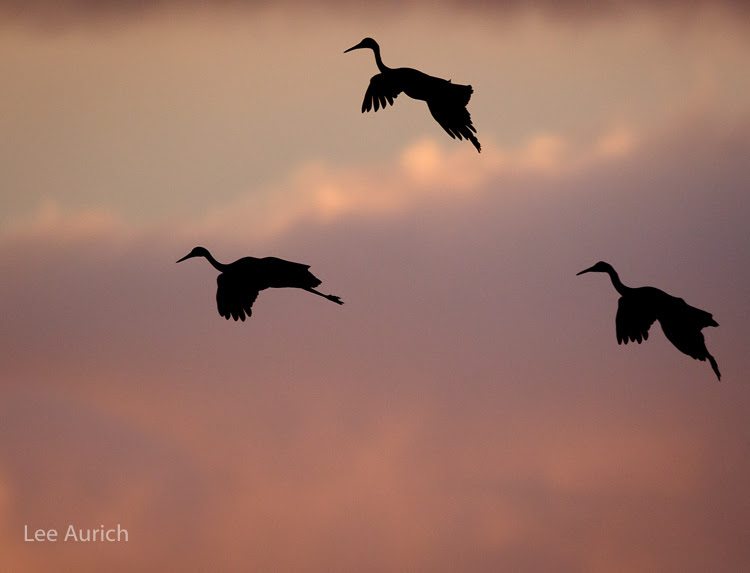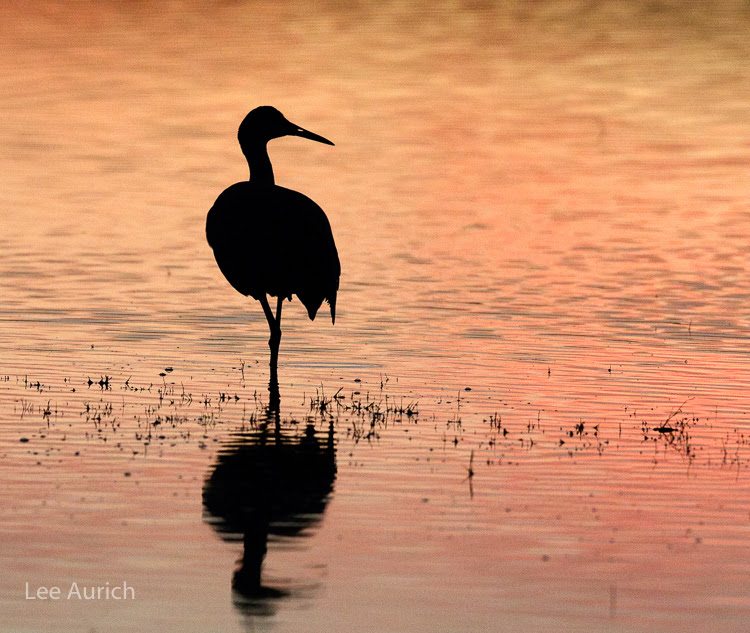Sandhill Cranes: winter wonders
By Lee Aurich
This is about a living bird that has the longest bird fossil history — stretching back to the time of the dinosaurs. The Sandhill Crane is a large, strong, but awkward looking creature. With a wingspan greater than six feet, it weights around eight to nine pounds (which is heavy for a bird). Sandhill Cranes form pair bonds and begin breeding between ages two and seven years old. They mate for life spending their next two decades together.
During the winter hundreds of Sandhill Cranes gather in the California Central Valley, and thousands gather in the Rio Grande river valley of New Mexico. These photos are from Bosque del Apache, a National Wildlife Refuge dedicated to nurturing the wintering cranes with safe locations for sleeping, water, and food.
This story begins at sunset as the cranes assemble together for safety in a shallow pond. During the night, one or two cranes will stand guard, listening for footsteps in the pond from potential predators; their hard, sharp beaks minimize the actual threat of predation.
The cranes arrive in small family groups, landing much like an airplane with their equivalent of airfoil braking:
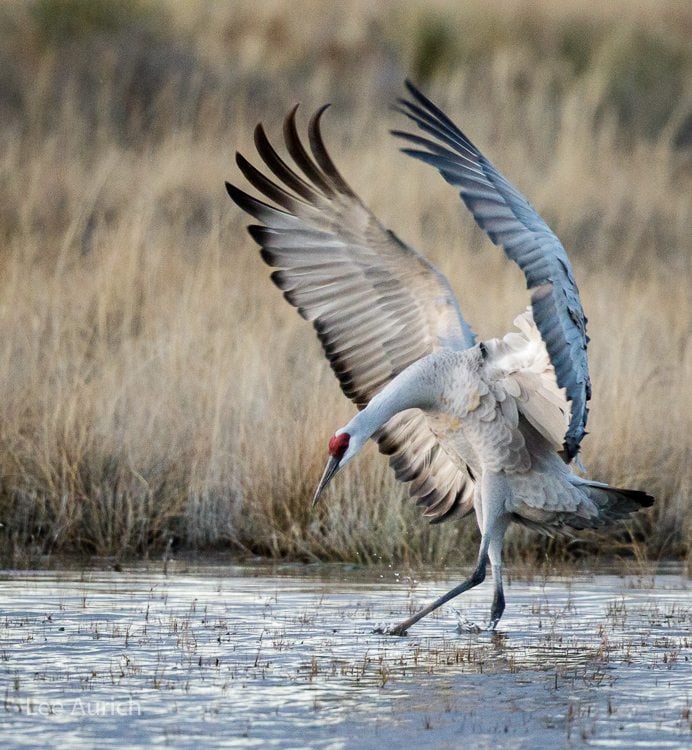
In this particular pond, conveniently for human observers located alongside a small public road, perhaps fifty to one hundred cranes will gather for the night. In prior years there were more; the National Wildlife Service (NWS) has opened additional ponds to encourage the cranes to spread out to reduce the potential for disease transmission due to overcrowding.
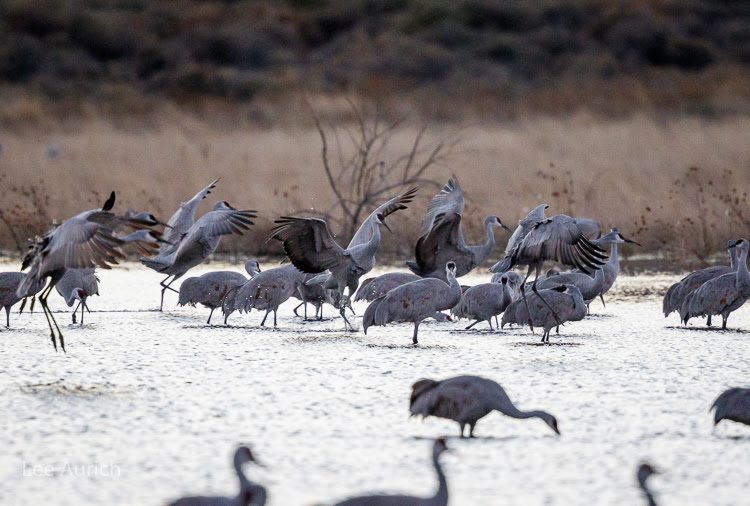
In the morning, the cranes get a leisurely start after sunrise. They depart in small family groups, communicating both vocally (mostly “here I am” calls) and with physical motions.
This pose is “I am ready to fly” which eventually leads to family members adopting it and then departing.
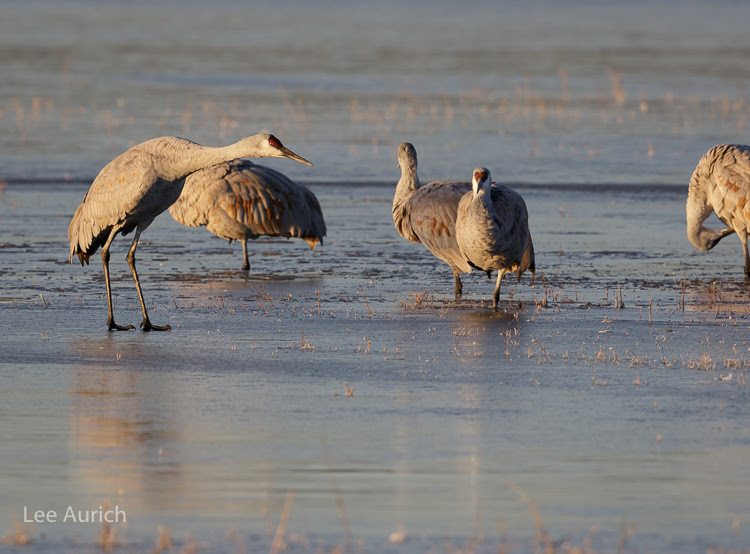
Despite large wings and strong muscles, cranes prefer to take off though a combination of running and wing flapping. On one very cold morning, shallow portions of the pond froze solid. This allows us to watch the foot work and appreciate the sharp claws that minimize slipping on the ice.
Takeoff begins with a strong downward and forward pushing flap:
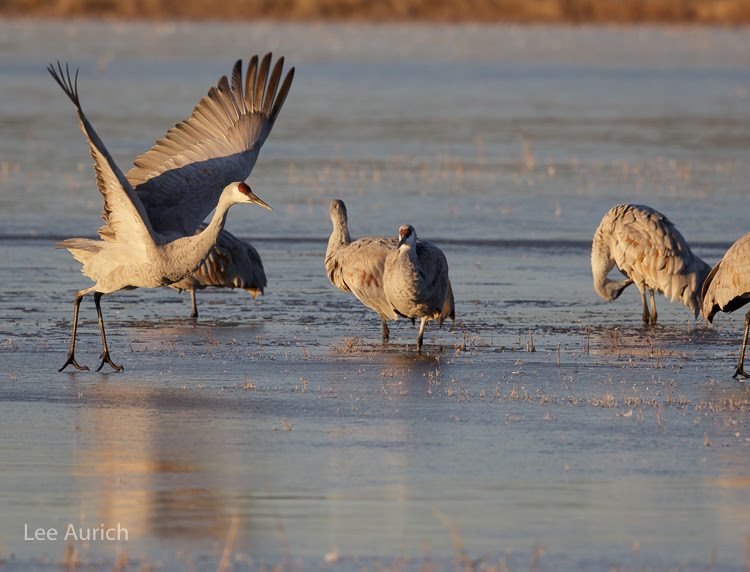
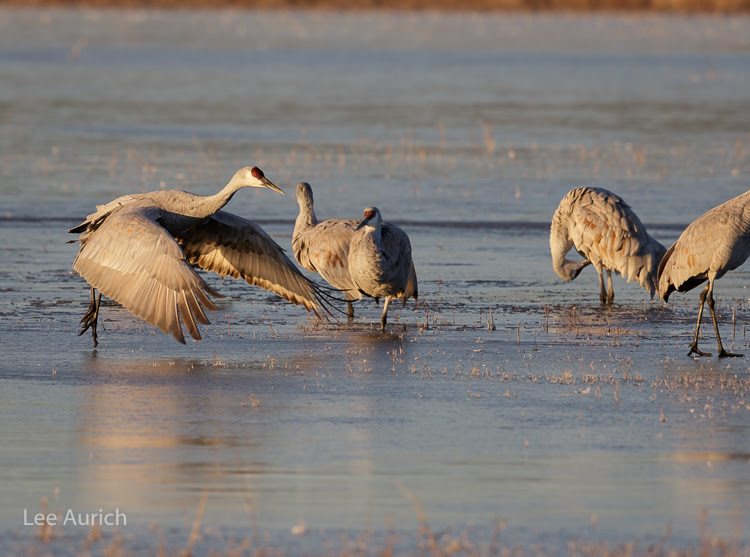
assisted by running.
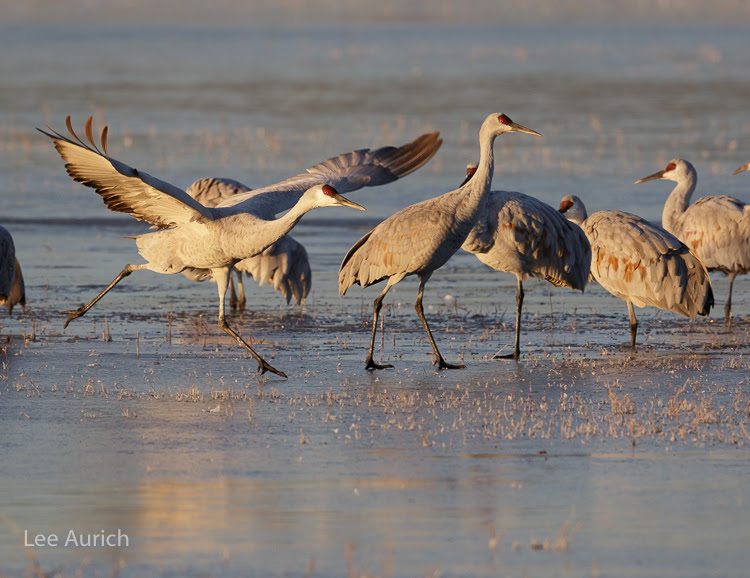
A family group, flying over fields of grain. The adults are in front, with the red, bald patches on their foreheads. The two immature cranes have feathers over the patches and tan markings on their upper neck.
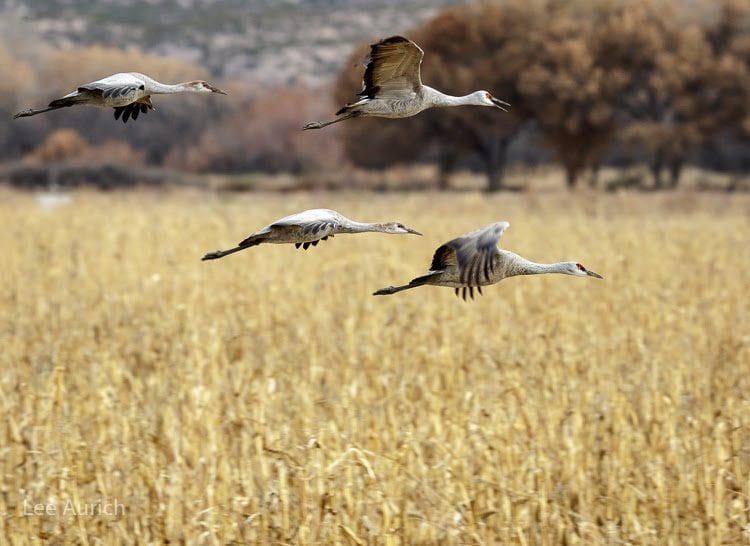
One rare morning with the temperature in the 20s, a few cranes tuck their legs under their body for warmth after spending all night standing in the potentially frozen water:
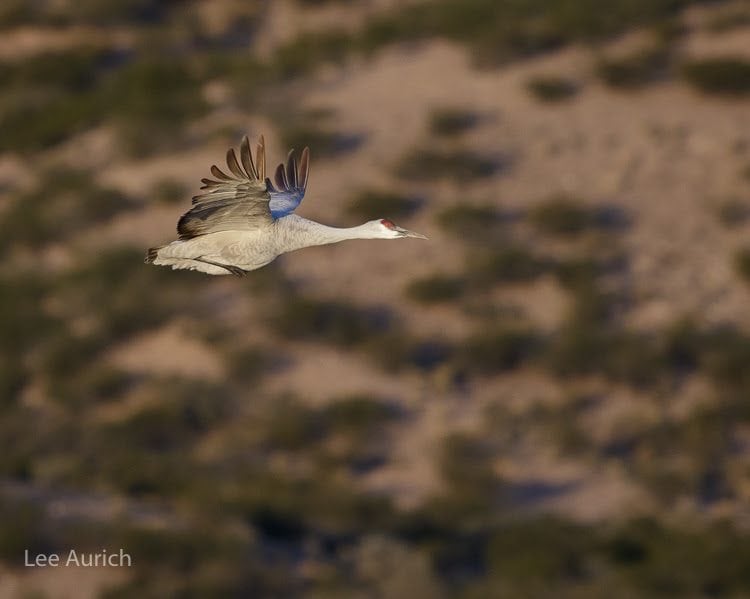
Breakfast is gleaning for grain.
The NWS grows corn in large fields. The cranes are nervous about entering rows of tall corn because of the lack of space to maneuver, fly, or use their beaks and claws against predators. Accommodatingly, the NWS slowly knocks down rows of corn for the cranes to pick through.
Arriving in small groups, the cranes’ landing tactics remind me of seeking a space for my blanket when arriving a tad late for lawn viewing of the Fourth of July firework show.
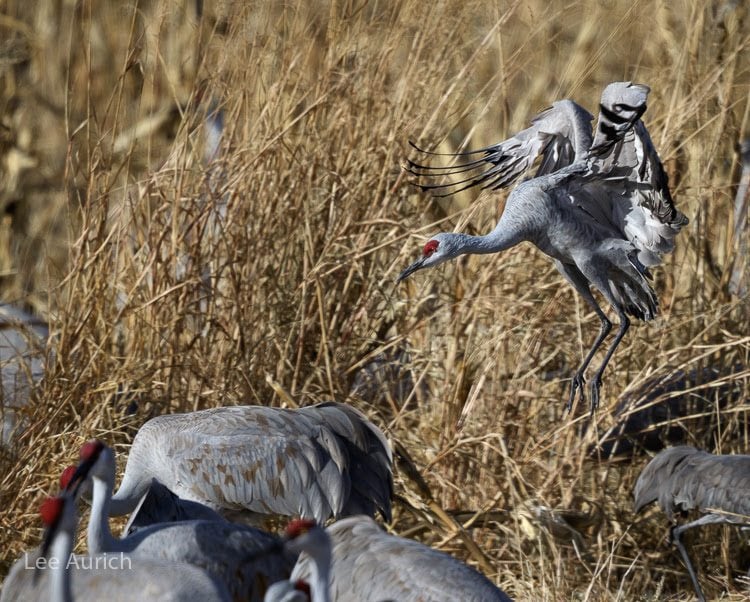
You can see several cranes gleaning and a brave few in the stalks behind:
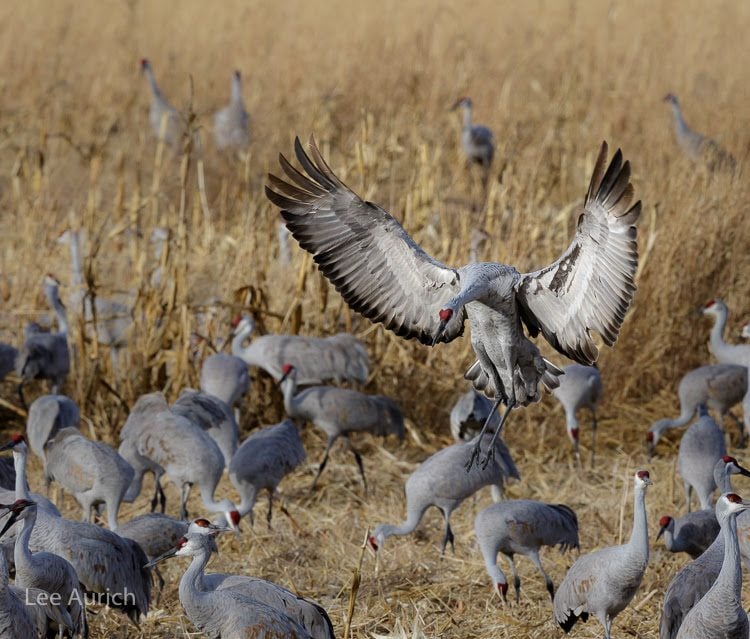
the longer the focal length, the faster the exposure required to “stop action. Photo by Lee Aurich
Key to the Sandhill Cranes’ pair bonding is dancing — a combination of calls, body positions, fancy footwork, and leaps.
These two cranes facing each other are demonstrating:
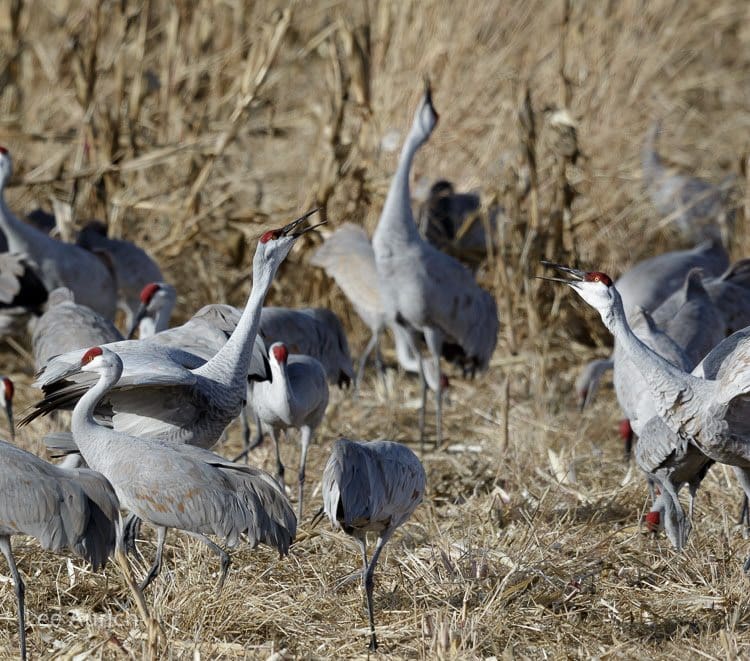
A joyful leap:
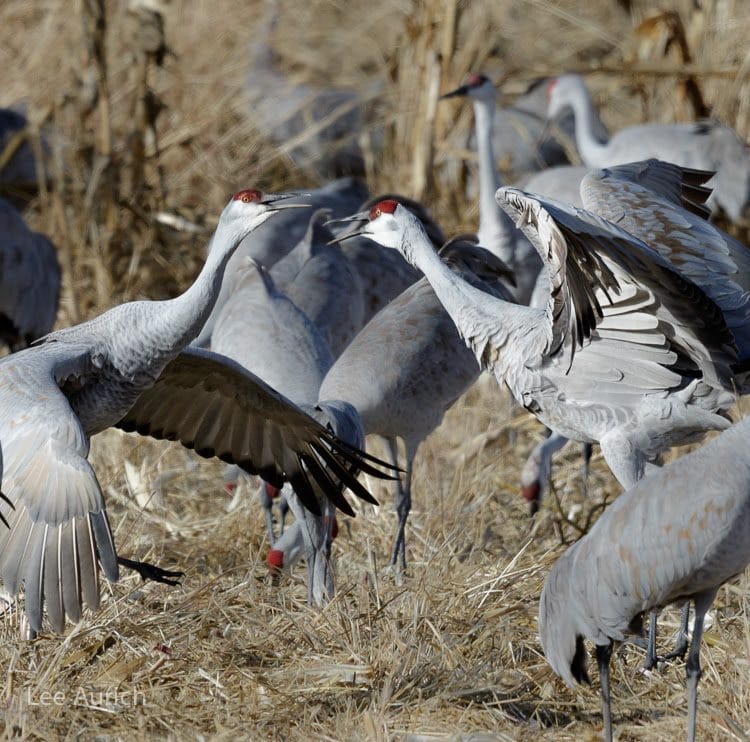
Followed by what might be anthropomorphized as a kiss:
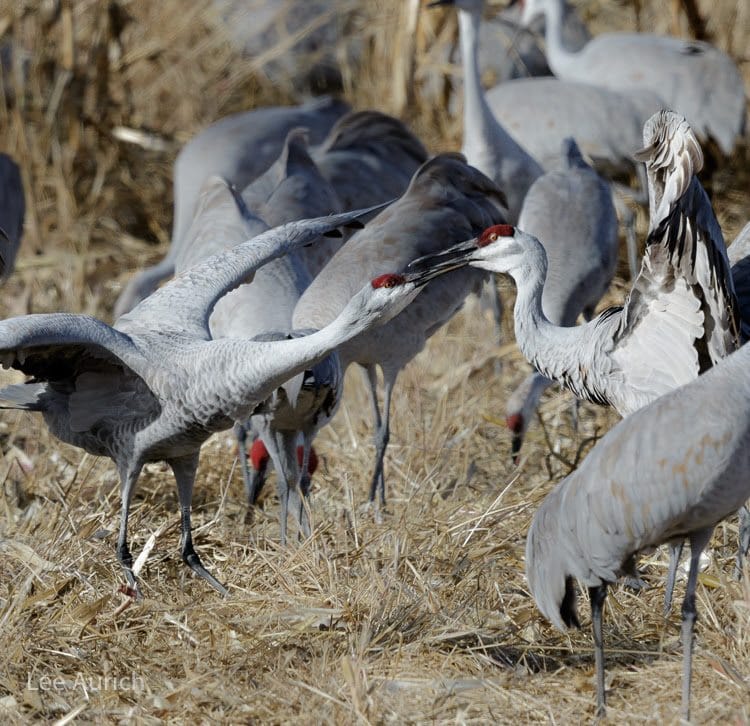
Lesser sandhill cranes (a smaller subspecies) dancing:
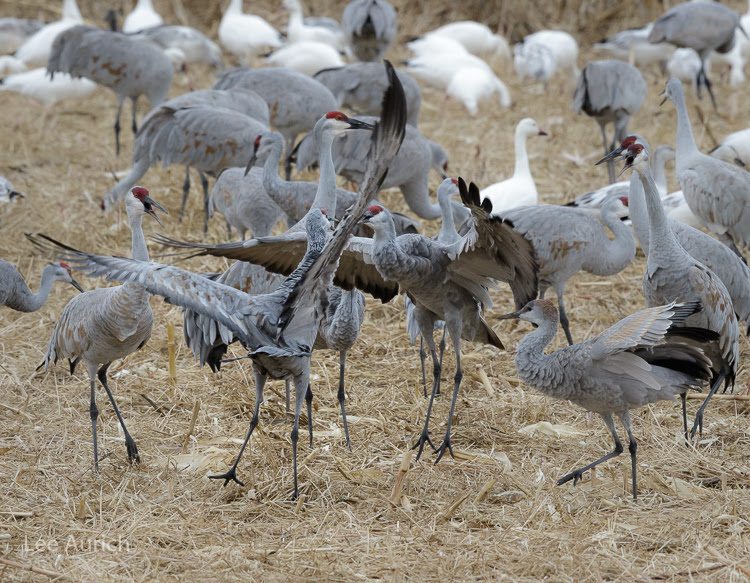
On the other hand, the cranes can be very protective of their territory and young. Legs and claws extended, these two are dueling over their small patch of ground.
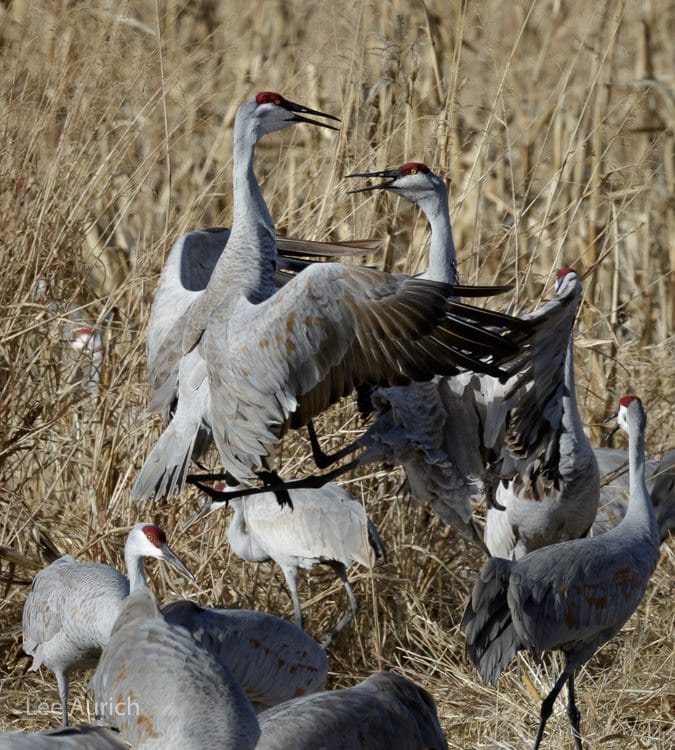
A fraction of a second later:
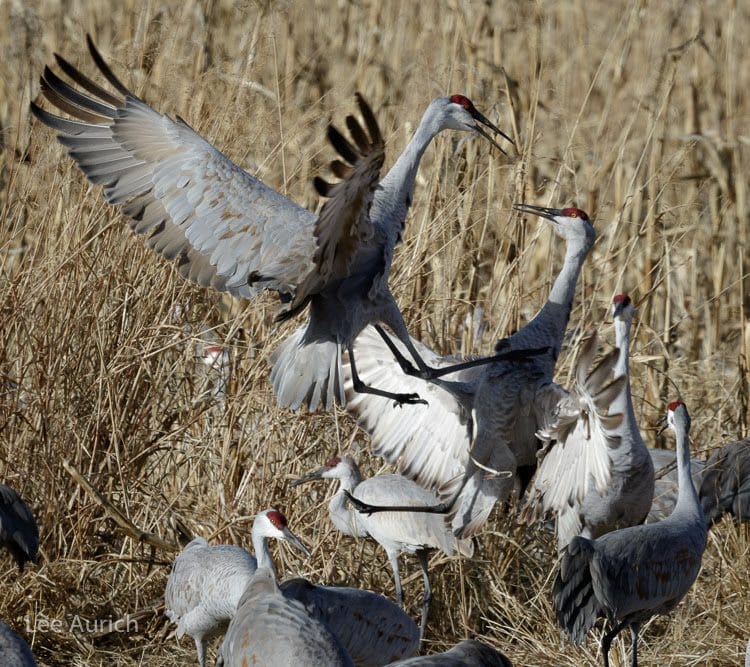
Ultimately the crane on the right prevailed and chased the other away, nipping at its tail.
Though their diet is mostly grain and any insects found during their gleaning, an opportunistic grab of richer protein is always appreciated:
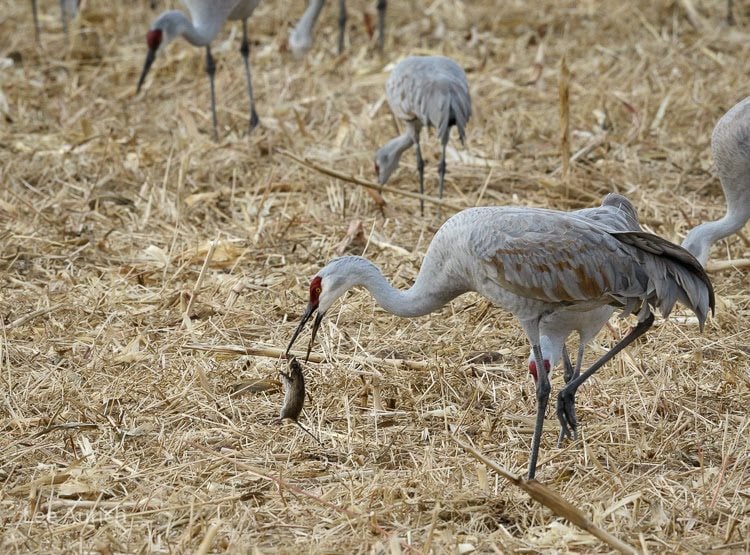
Each of the feathers on the crane seem to be individually controlled by muscles to aid in instantaneous fine-tuning during flight.
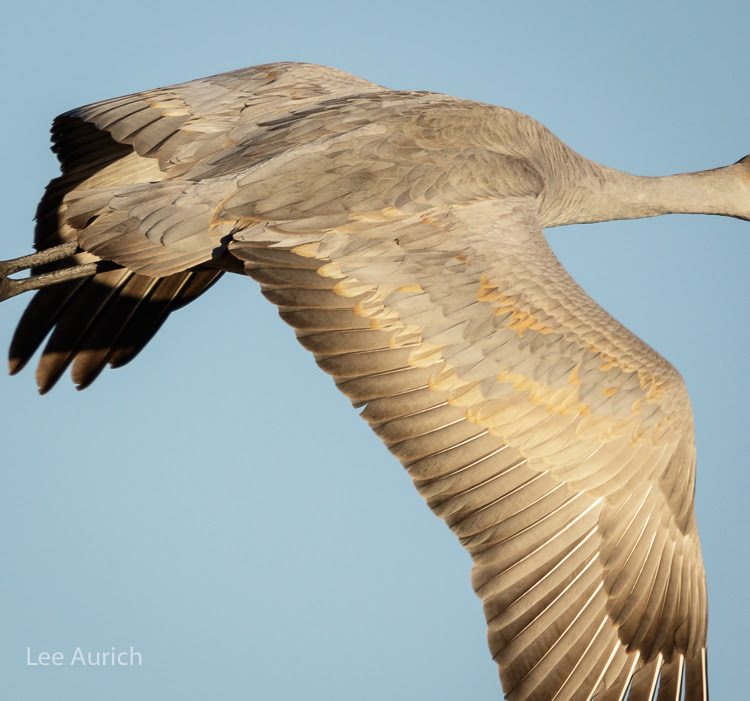
For me, this photo captures the powerful muscular body that controls the huge wings:

Lee Aurich was introduced to photography in high school – many, many years ago. In recent years, his focus has been on the great outdoors with a particular love of Yosemite. His love of birds, particularly nests, nestlings and interesting behavior, began with his discovery of a family of very young ducklings. You can also see his photo essay about a domestic squabble among Ospreys and the mishaps of a Lake Merritt goose family on our blog. More of his work is at aurich.com/photos.
Want to explore the winter flocks of the Central Valley with a great teacher? We still have three spaces open in our “Migrant Treasure Hunting in the Central Valley” class with Juan Carlos Solis. This class starts on Thursday, January 19, and includes two evening classroom sessions followed by two Saturday field trips. See our Classes web page for details.
Bonus photos: The changing colors of sunset.
